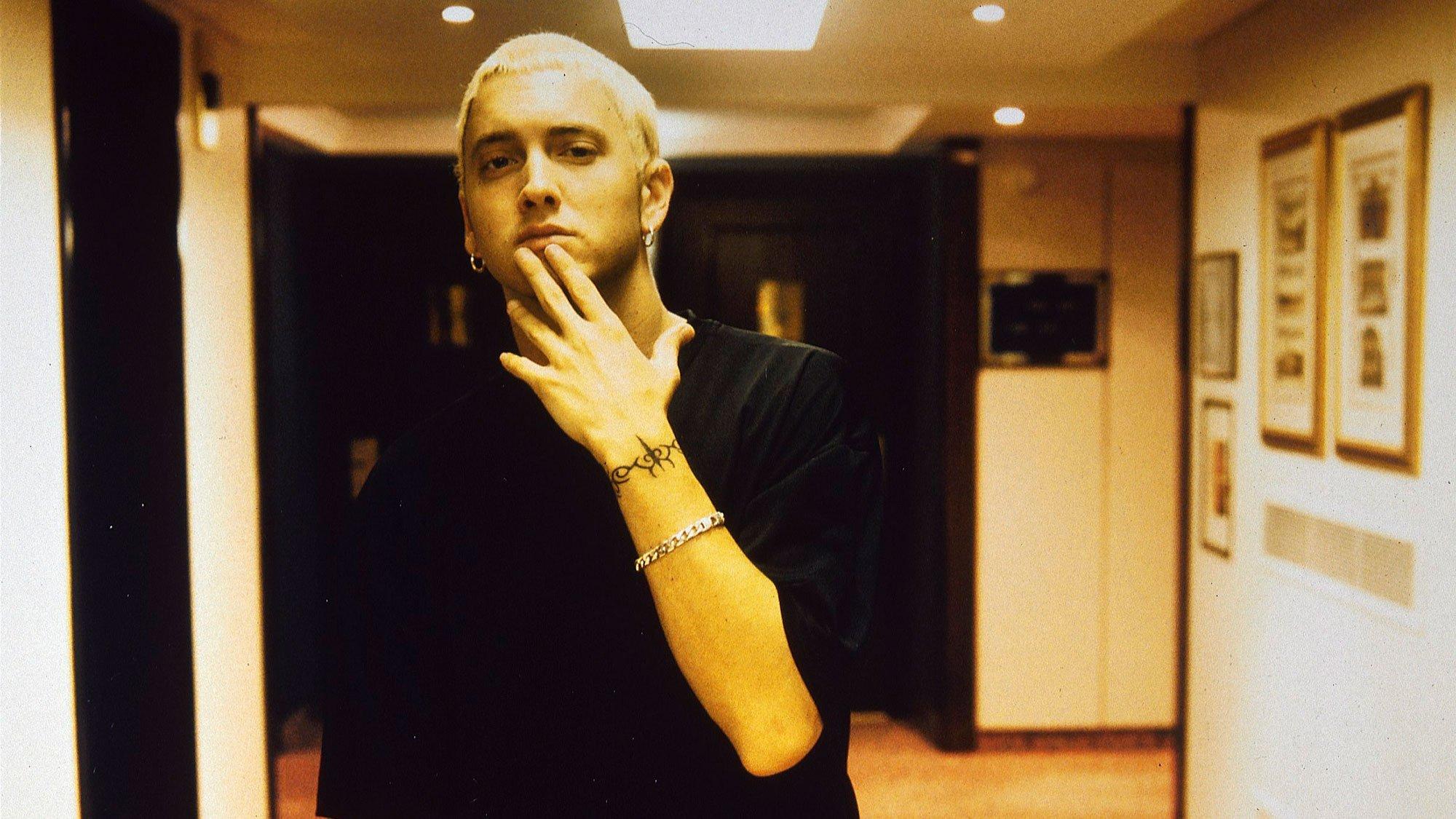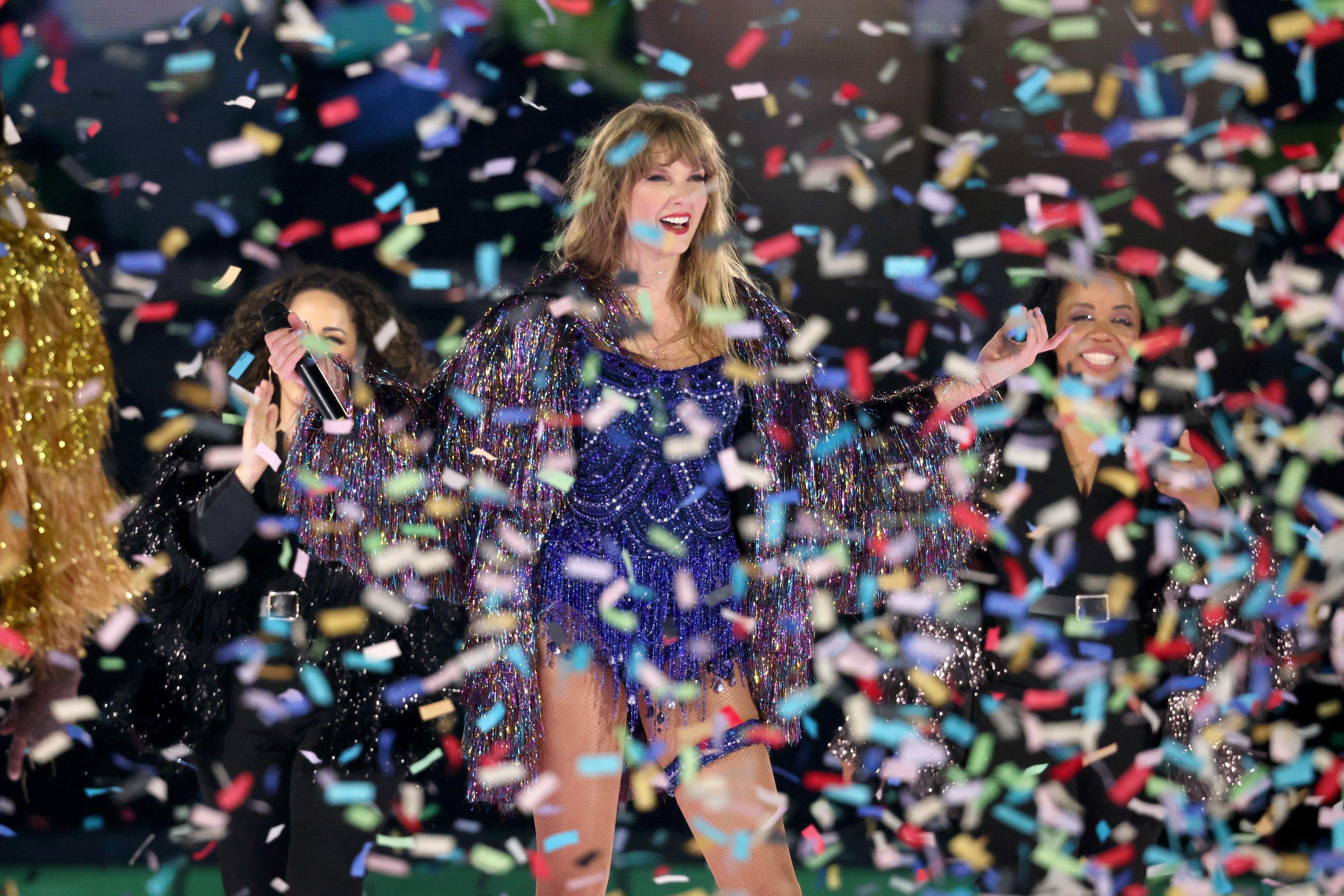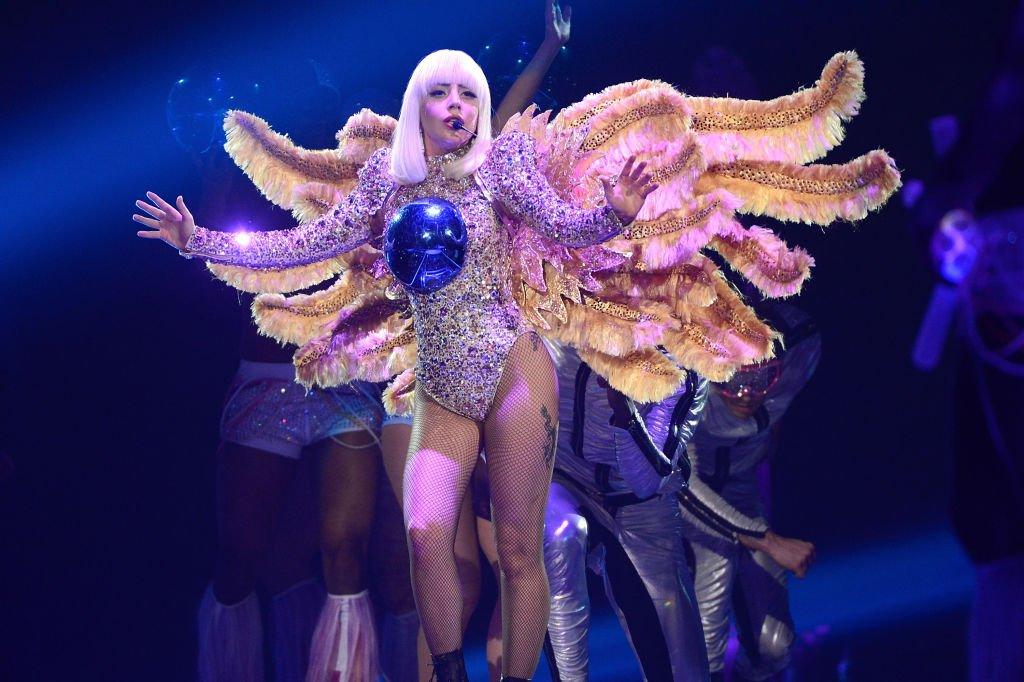A decade ago, the music industry was practically eulogizing Lady Gaga’s career. Cause of death: her fourth album, ARTPOP.
Universally deemed a misfit (even among Gaga’s off-kilter discography), it was all too easy to crack “artflop” jokes as the record’s reception paled in comparison to the thunder of 2011’s Born This Way. In addition to Billboard-charting bangers aside, Born This Way pledged to be a champion for LGBTQIA+ rights, employing the word “bravery” so frequently that the two are now inextricably bound. The album’s daring demeanor had created a tough spectacle to follow, even for the shock-pop maven.
But rebukes of ARTPOP’s avant-garde concepts and stylings, disregard the record’s brazen interweaving of music, fashion, technology, and digital art. Released after Gaga broke her hip and canceled the Born This Way Ball tour, ARTPOP was a canvas of earth-shattering bursts of pain and passion, and an electronic confessional.
For her efforts and vision, Gaga's maligned 2013 album would become a blueprint for contemporary alt-pop artists — not just with its experimental clash of genres, but through its winking subversion of industry expectations.
In honor of ARTPOP’s tenth anniversary this month, read on for 10 reasons why the overlooked outcast of Gaga’s catalog is actually the bravest album of them all.
It Prioritized Creativity Over Sales And Charts
When the public slams an artist for “only” selling one million copies of an album in a week, record sales lose their shine. After facing flack for her Born This Way numbers in 2011, Lady Gaga entered the ARTPOP era with clear intentions: creativity for creativity’s sake.
“Really, it’s about freeing yourself from the expectations of the music industry and the expectations of the status quo,” she explained during an interview at SXSW. And you know she meant it, because that same week she bucked those pressures by climbing atop a mechanical bull, where she served as the human canvas for the "creative output” of vomit artist Millie Brown.
“I write for the music not for the charts,” she tweeted, addressing a comparison between her lead single “Applause” and Katy Perry’s song “Roar,” which outperformed “Applause” on the Billboard charts. The singles were released days apart, stirring up a heated conversation about which singer was a more powerful pop star. Gaga was, of course, quick to crush the debate.
“Applause” peaked at No. 4 on the Billboard Hot 100, and despite being released in mid-November, ARTPOP nabbed 2.3 million album sales worldwide by the end of 2013. In contrast, Born This Way sold 2.1 million copies between its May 2011 release and the end of its debut year in the United States alone.
It Put Gaga In The Producer's Seat — Alone
By 2013, Lady Gaga boasted an impressive list of co-producing credits from working alongside collaborators like RedOne, DJ White Shadow, and Fernando Garibay. Yet ARTPOP marks the first time she slipped behind the soundboard by herself.
For "Venus," an intergalactic ode to lust that blossoms into starry-eyed infatuation, she saluted the titular goddess of love and pushed the men out of the room, folding a hybrid Sun Ra reference/Zombie Zombie sample into her sexually-emboldened EDM. Gaga cites "Venus" as the first song she ever self-produced, a major milestone for the multi-hyphenate and for women producers as a whole.
It Wasn't Afraid To Get Messy
One decade’s definition of "sloppy" is the next decade’s epitome of style. In 2013, the general consensus among critics was that ARTPOP’s sound was often too messy to take seriously. Their examples were copious; "Aura," for instance, dedicates 15 seconds to nothing but hysterical, autotuned laughter over an unraveling country western guitar riff. Manic deep cuts "MANiCURE" and "Jewels N’ Drugs" were labeled choppy and sonically inconsistent, as Gaga allegedly struggled to find common ground between rock, trap, and electronic music.
Compared to the streamlined pop sound of the time — including some of Gaga’s prior hits — ARTPOP’s frenetic mishmash of sounds felt totally alien. "I was desperate, in pain, and poured my heart into electronic music that slammed harder than any drug I could find," Gaga reflected, explaining her need for catharsis over catchiness (a choice that she was lambasted for at the time).
Ten years later, her avant garde approach to pop suddenly seems remarkably en vogue, as genre-hopping and highly-textured sonic palettes become the norm — especially in the alt-pop sphere. In hindsight, it’s apparent that ARTPOP was ridiculed so artists like SOPHIE, Charli XCX, and Dorian Electra could rave.
It Was, Literally, Designed To Be Out Of The World
ARTPOP prioritized pushing art into uncharted territory, and not just on Earth.In addition to a naked Jeff Koons sculpture of Gaga herself, the album’s release was feted with the debut of a flying dress named Volantis. The original creation from Gaga’s TechHaus (a branch of her Haus Labs team) is technically an "electric powered hover vehicle" that fits around Gaga’s body to hoist her into the air. Gaga offered a less technical term for it, calling the dress a metaphor. "I will be the vehicle of their voices," she said during a press conference, sharing her vision for representing young fans in the sky.
Volantis arrived alongside news that Gaga would become the first musician to perform in space aboard a Virgin Galactic ship. The flying dress successfully cleared its first flight; the Virgin ship unfortunately did not. After a fatal test flight, the plans for Gaga’s galactic debut were canceled.
It Crushed Tabloid Trash-Talking
It’s admittedly hard to recall ARTPOP’s ill-conceived R. Kelly collaboration "Do What U Want" without wincing. Beyond Kelly’s unnerving presence on the track, his lone sexually-charged verse ultimately skewed the true message of the song, transforming a kiss off to tabloid journalism into randy radio fodder.
Gaga scrubbed the song from streaming services in 2019, sparing the alternative version that instead features Christina Aguilera. Here, Gaga’s intended retaliation shines: "You can’t have my heart / and you won’t use my mind / but do what you want with my body," she taunts on the chorus, welcoming the public’s superficial — and therefore meaningless — judgments.
When unveiling the track in October of 2013, she took to X (then named Twitter) to trounce a litany of rumors and nitpicks about her weight, likeness to Madonna, and erroneous identity as a hermaphrodite. At its core, "Do What U Want" proved that the only gesture more pointed than a middle finger is cackling while inviting the world to do its worst.
It Invented A New Artistic Concept
Lady Gaga can’t take credit for the notion of art-pop, but she did coin a new phrase, calling the conceptual glue of ARTPOP a "reverse Waholian expedition." Translation: if Andy Warhol transformed mass-produced items like Campbell’s soup into high art, then Gaga wanted to flip the process, placing high art where it could be easily accessible to the public.
As a result, the visual aspects of ARTPOP present a mosaic of the most esteemed masterpieces of all time. The busy album cover fuses the brilliance of American sculptor Jeff Koons with fragments of Sandro Boticelli’s magnum opus "The Birth of Venus," while her outfits for public appearances nodded to greats like Pablo Picasso and Salvador Dali with brash makeup and fake mustaches. The concept opened her up to mockery — including from Maroon 5 frontman Adam Levine — but introduced the basics of art history to millions of listeners worldwide.
It Openly Examined Gaga's Relationship With Drugs And Alcohol
Many of ARTPOP’s most exuberant moments orbit high or drunken states, such as Gaga sneaking around Amersterdam while stoned and incognito on "Mary Jane Holland." Trap outlier "Jewels N’ Drugs," which collects verses from T.I., Twista, and Too $hort, packs the same giddy punch despite its somewhat awkward execution. Yet the party pauses on "Dope," ARTPOP’s sole piano ballad.
The sobering single gazes inward, where Gaga finds a startling void, her spirit gutted after years of addiction. While the song’s lyrics vow to prioritize loved ones over drugs and liquor, Gaga revealed the most personal promise during her album release show.
"I do not have to be high to be creative," she professed from behind her piano, hand raised in the air as if taking an oath. "I do not need to be drunk to have a good idea. I can sit with my thoughts and not feel crazy." On an album bursting with innovation, "Dope" is her firmest pledge to self-improvement, delivered with aching sincerity.
It Ventured Into The Tech World
Designing mind-bending art? There’s an app for that. Or there was, anyways. ARTPOP arrived with a supplemental app, designed to enhance Gaga’s multimedia approach to the album’s release. As a way to empower fans to dabble in digital art, one of the app’s main features was a gif and still image generator that allowed users to choose from a rainbow of gyrating geometric shapes and backgrounds. Most creations straddled the line between optical illusion and Tumblr-ready art. The app also offered fans the ability to stream the album and chat with each other.
It was an entertaining endeavor, albeit ultimately a short-lived one. Despite an in-app countdown for other features, including a stream of new behind the scenes videos and a digital audio workshop called TrakStar, neither element came to fruition. Due to Gaga’s shift in management, the project was never developed further.
Still, the ARTPOP app remains a unique addition to pop’s first brushes with modern tech, long predating crossovers like Charli XCX performances on Roblox and AI-created music.
It Refused To Shy Away From Themes Of Sexual Assault
When ARTPOP hit shelves, the world was still three years away from the awareness about pervasive sexual assault revealed by the #MeToo movement. But a hush around the topic didn’t stop Gaga from eeking out a screech or two about her own experiences with abuse in 2013. While Gaga has since divulged more information about her unfortunate experiences with predators as a fledgling popstar, the ARTPOP track "Swine" dropped some of the first angsty breadcrumbs about her survival story.
"I know you want me / You’re just a pig inside a human body / Squealer, squealer, squealer, you’re so dis-GUS-ting," she practically spits with revulsion on the chorus. The deep cut is an exorcism dressed up as a rave, revealing a gut-churning snapshot of a woman publicly processing her own violation years before the act was deemed acceptable.
It Was Her First Record After Canceling The Born This Way Ball
Scrapping a major tour over an injury shouldn’t warrant a comeback, but that’s what the world demanded of Lady Gaga when her Born This Way Ball hit the brakes. Gaga was forced to end the tour early in February 2013 when she broke her hip, thwarting her ability to walk, let alone dance. As she underwent surgery and paparazzi vied for photos of her in a Louis Vuitton wheelchair, the public largely viewed the truncated Born This Way Ball as a personal failure on Gaga’s part.
By the time ARTPOP arrived, the expectations for her next move couldn’t have been higher — which made Gaga’s spasmic, genre-jumping, vomit-covered return to pop all the more daring.
10 Reasons Why Outkast's 'Speakerboxxx/The Love Below' Is One Of Rap's Most Influential Double Albums




